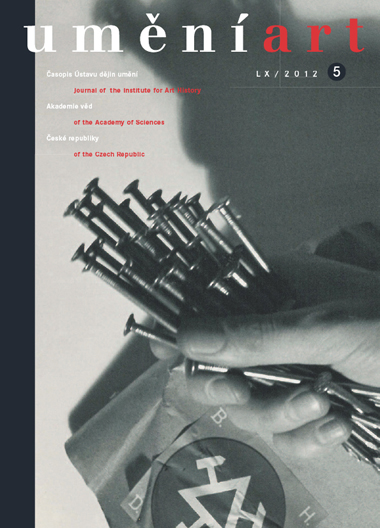Kateřina Horníčková - Michal Šroněk
The Bydžov Altarpiece and Its Denominational Transformations
The question of the denominational identity of works from the 15th and 16th centuries long remained outside the standard interpretation of 'Czech' art history, and this meant that art historians have overlooked many works on the grounds that they do not satisfy arbitrary stylistic, qualitative and 'development' criteria. Yet these works are crucial for an understanding of the functioning of images as media of non-Catholic denominational identity, and may also contribute to an understanding of certain specific cultural phenomena in the religious development of Bohemia. The fate of the late medieval panel from Nový Bydžov known as the Bydžov Altarpiece (after 1531) is an example of the denominational transformation of a work and the contexts in which it operated. The altarpiece is also a rare instance of a personal expression of Utraquist eschatological ideas by means of images. It is the only surviving altarpiece in which the actions of priests related to Communion under both kinds comprise the central theme, and thus the altarpiece manifests the role that the priesthood played in the salvation of an Utraquist community. The authors argue that the panel was originally an epitaph (epitaph altarpiece) for the Utraquist priests who are painted on its wings, and for denominational reasons these images were repainted as saints in 1624-1625. They trace the changes in the religious and social contexts in which this work operated and offer a hypothetical reconstruction of the physical changes the work underwent, and the transformation of its meaning, in consequence of these changing contexts. This epitaph or epitaph altarpiece with the two brothers, originally evidently a private work with a memorial function and an eschatological significance that manifests orthodox Utraquist theology, was adapted for Lutheran and then Catholic contexts in line with changes in the community's denominational affiliations over the historical perspective. Each denomination saw in the Bydžov Altarpiece something that was appropriate for its religious practice - and what was incompatible was recontextualised, altered or removed.
Full-text in the Digital Library of the Czech Academy of Sciences:
https://kramerius.lib.cas.cz/uuid/uuid:0b98f8f4-ab80-6368-ebf7-9fb50ce9301b
< back

